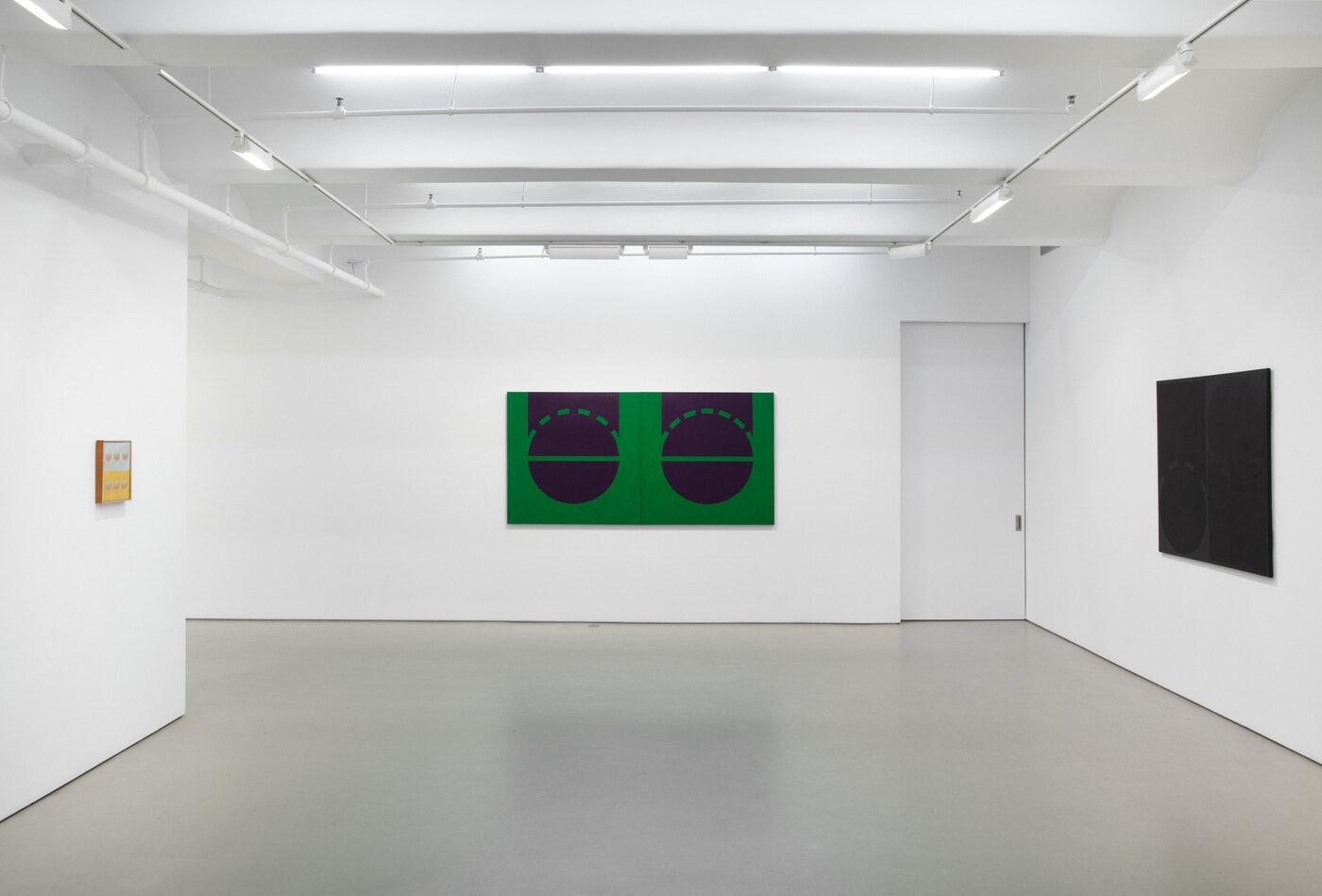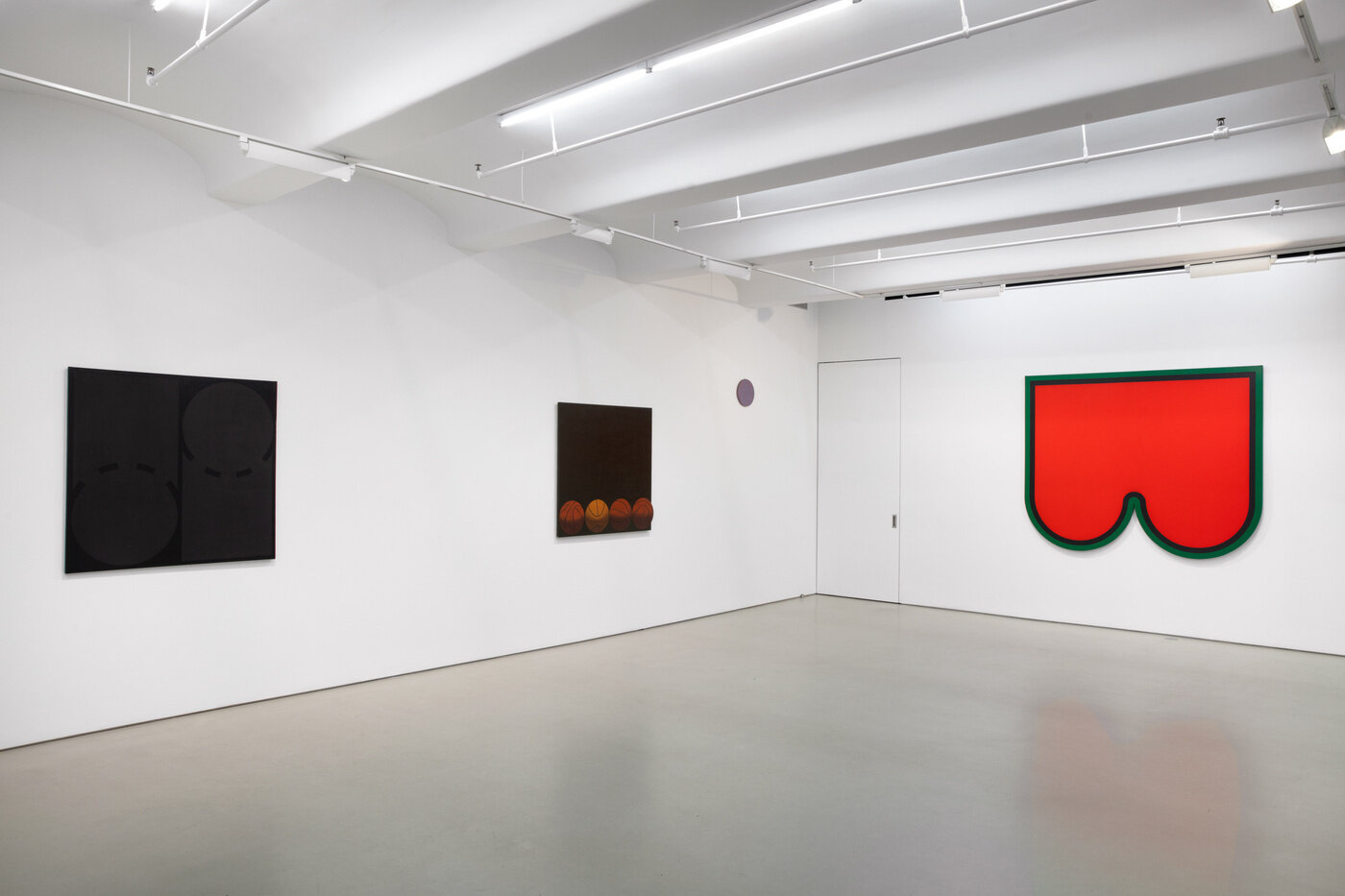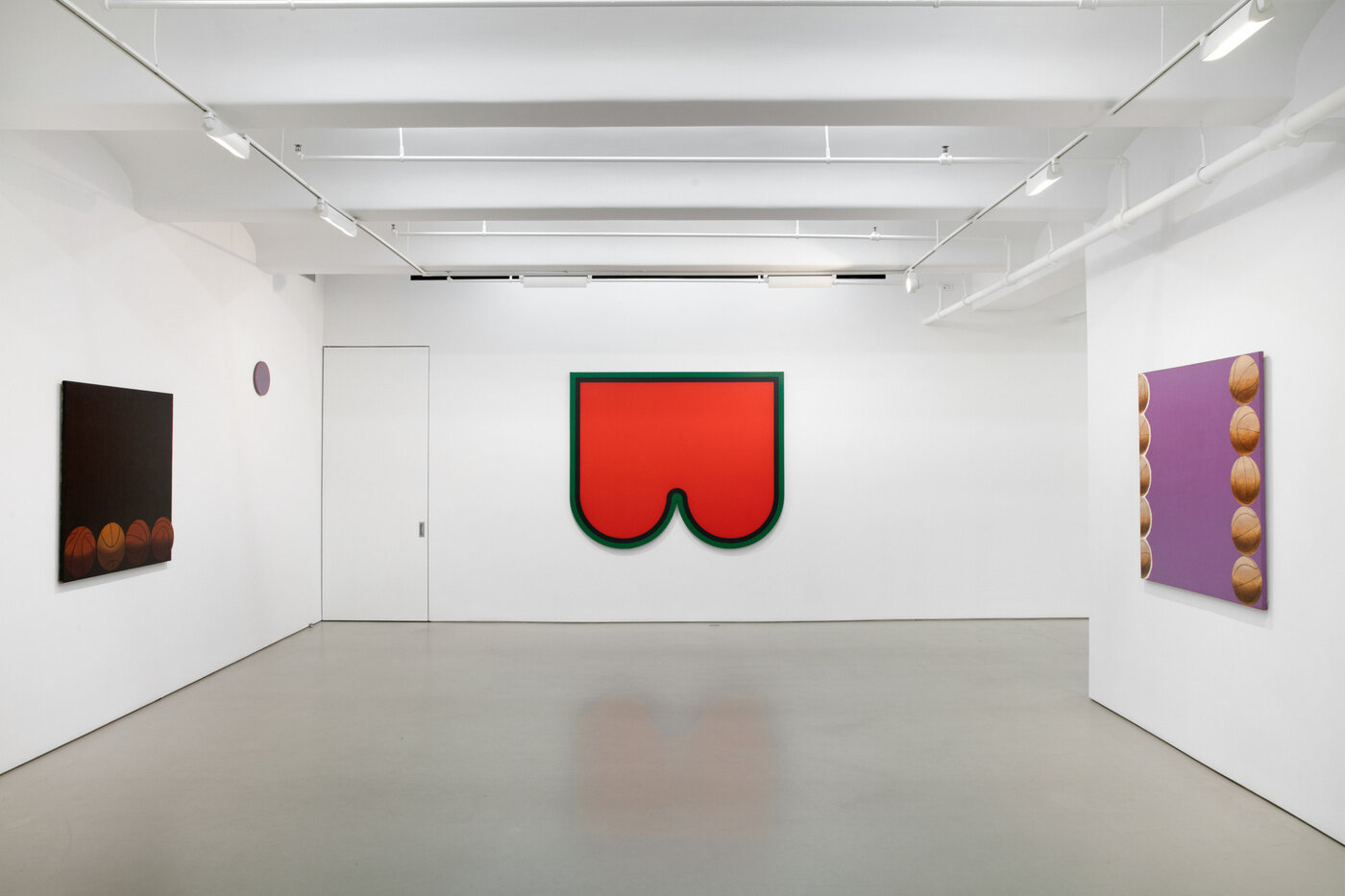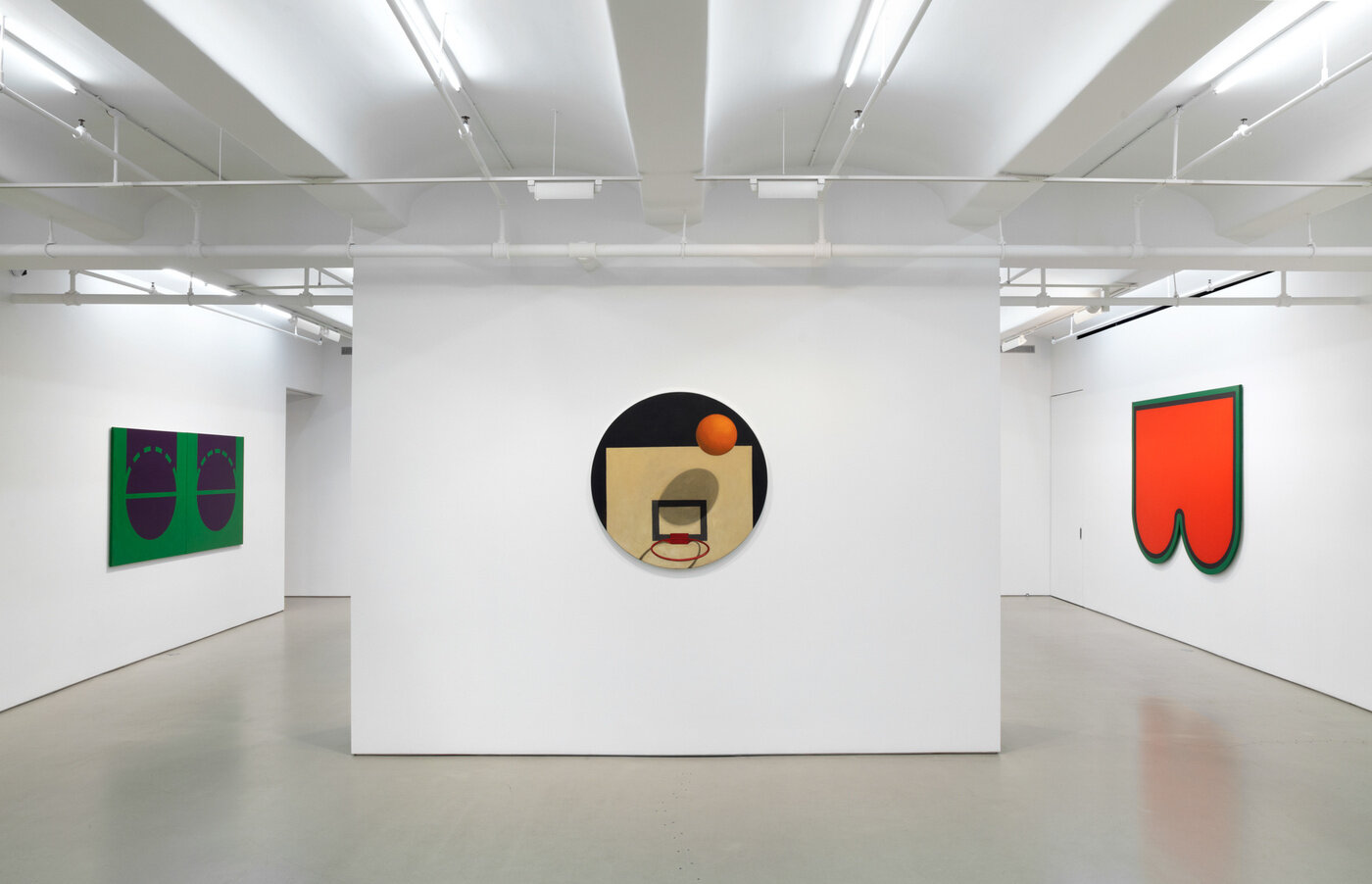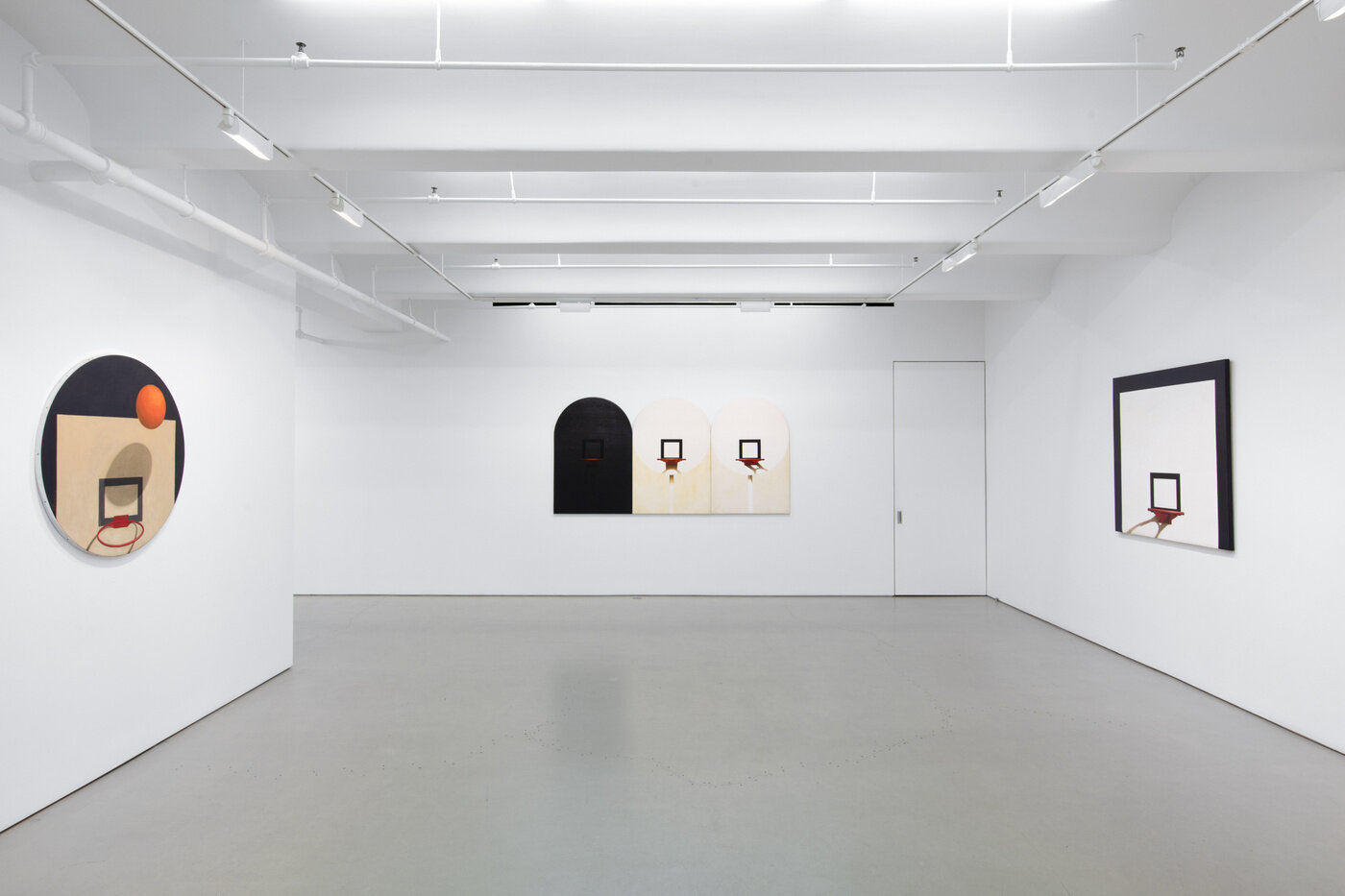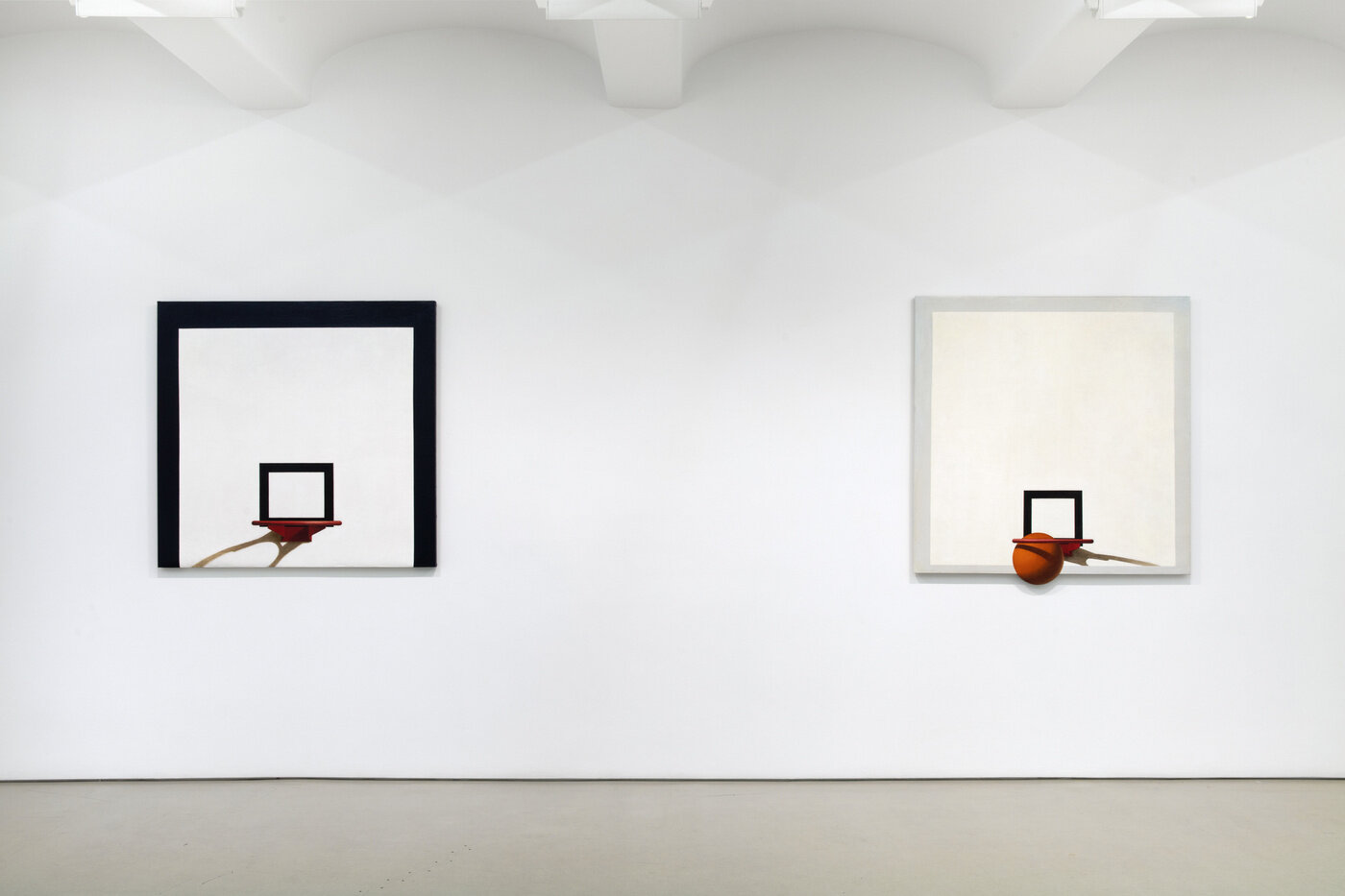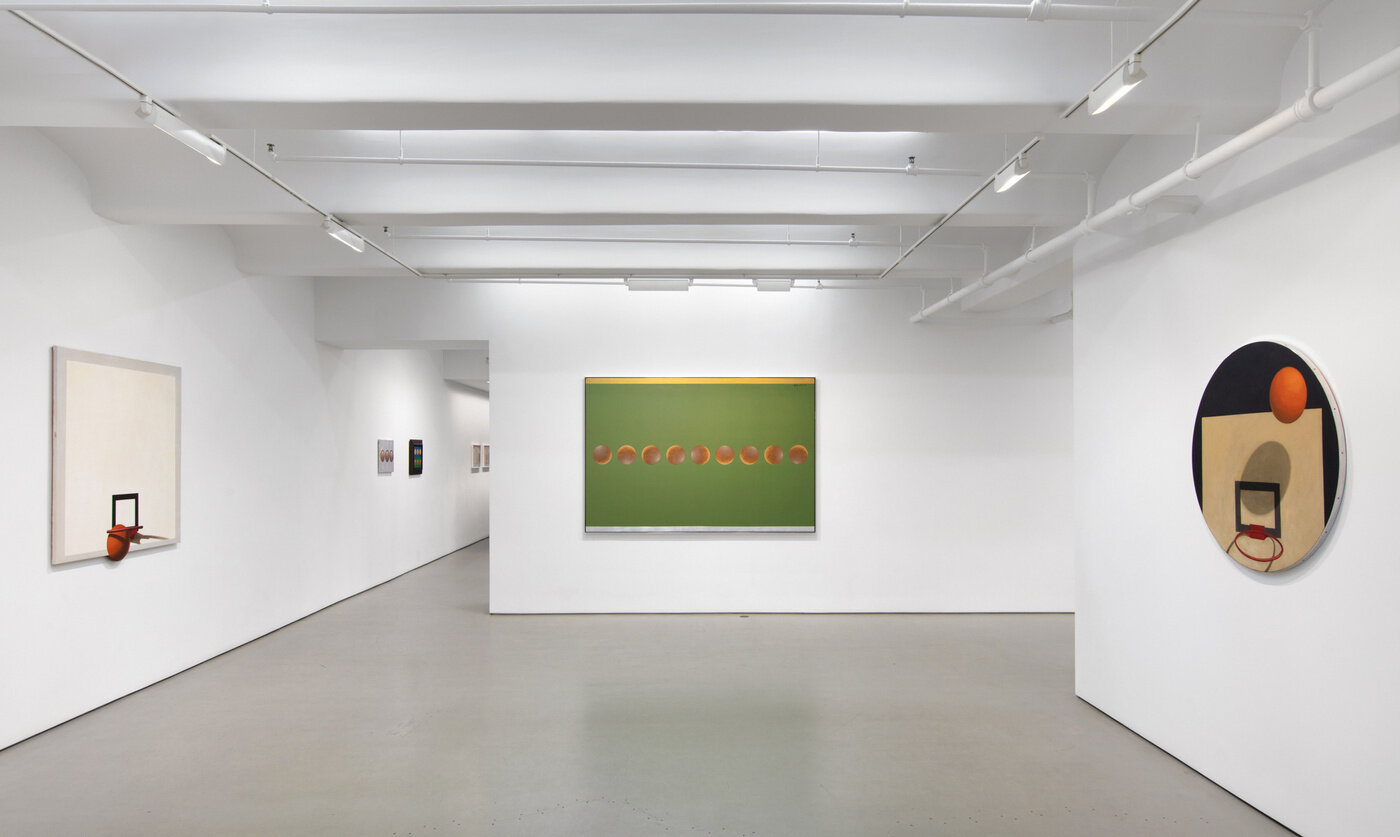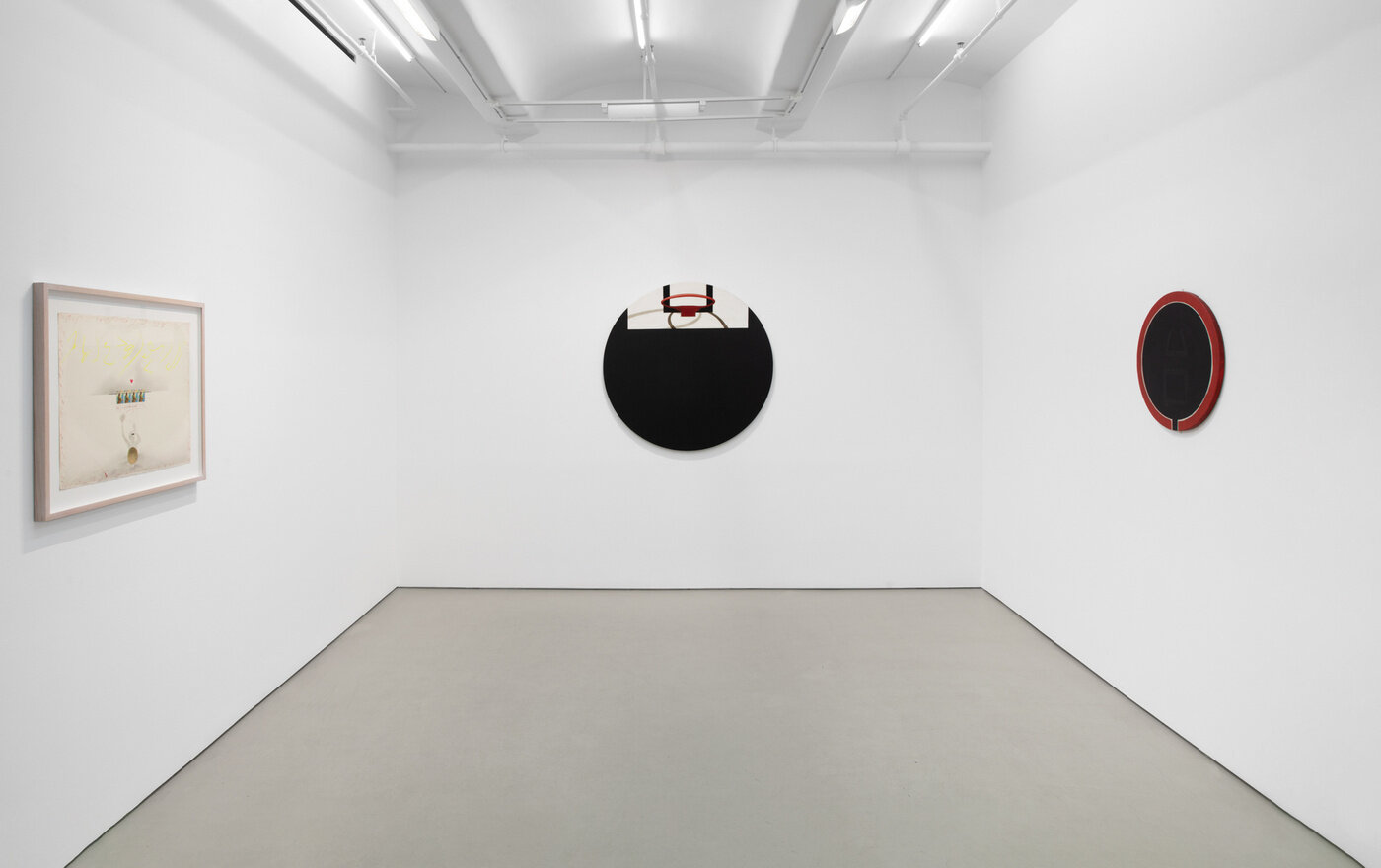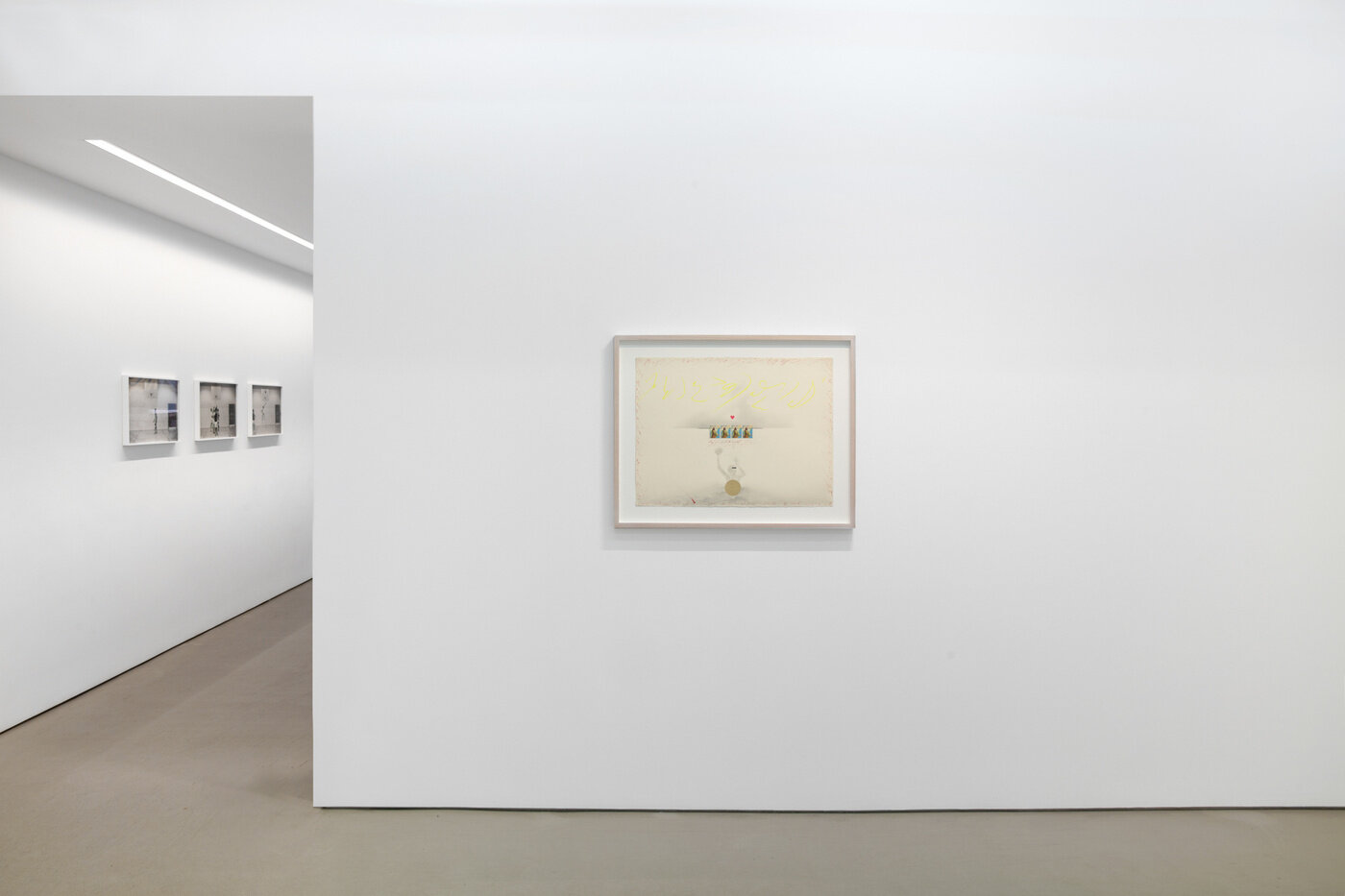Barkley L. Hendricks: In the Paint
Works (Tap to zoom)
Press Release
Barkley L. Hendricks
In the Paint
February 24 – April 30, 2022
513 W 20th Street, New York, NY
Jack Shainman Gallery is proud to present In the Paint, an exhibition of rarely presented work by Barkley L. Hendricks at our 513 West 20th Street location, which features Hendricks’s basketball themed paintings, related photography, works on paper, and personal sketchbooks.
This early body of work is an exploration and interpretation of abstraction from the perspective of an artist whose practice was deeply interested in social community and representing the idea of Blackness. Created mostly in the late 1960s between his years as a student at Pennsylvania Academy of the Fine Arts and Yale University, the paintings are a formative study of minimalism—an investigation of light, color, line, and geometry based in the shapes of the game and inspired by Hendricks’s own love of basketball and its presence in his community.
Recognized for his pioneering contributions to portraiture and conceptualism, Barkley L. Hendricks is a hugely influential artist and his radical and prescient “black cool” images have profoundly shaped art history. Hendricks’s basketball works both challenge and complement his celebrated position as a figurative painter and underscore the complexity and breadth of his singular career.
In partnership with Skira, the Gallery published basketball, one in a series of catalogues each dedicated to a distinct area of Hendricks’ practice, which will be followed by a comprehensive monograph for release next year. Included here is an excerpt from the catalogue essay “Man to Man in the Zone” by Terry R. Myers, a writer, editor, and independent curator based in Los Angeles:
In the late 1960s, when it was still assumed that artists—especially painters—would take a side in the representation versus abstraction debate even though the Modernist ascendency of the latter was coming to an end, Barkley L. Hendricks challenged his own position as a painter of figurative (often full-length) portraits with a striking body of work known as his Basketball Paintings. They are set apart from his other contemporaneous paintings most obviously by their lack of any depiction of any part or whole of any human figure whatsoever… As Franklin Sirmans put in no uncertain terms: ‘Hendricks’s embrace of two very different styles offers insight into the proverbial black painter’s burden of representation versus abstraction.’
While employed with the Philadelphia Department of Recreation as an arts and crafts specialist, Hendricks would make drawings of the basketball court outside his window with bent rims and no nets, a court he suggests was empty during those cold months but still held visual memories for him: “Beside the game that provided color and geometry for many of my compositions, there were the playground regulars who always provided attention-getting behavior besides their faces, fashions and attitudes.” This description suggests that the Basketball Paintings and Hendricks’s figure paintings share even more than what is on, let’s say, the surface. It is important to recognize that the paintings are painted in very similar if not identical ways: while photographic reproductions of the Basketball Paintings may suggest lesser evidence of Hendricks’s touch (likely because of the qualities that make them appear as if they are “abstract,” formal paintings; I will return to this below) this is not confirmed in person. In the case of a painting like Father, Son, and … (1969) that has as much potential to be interpreted as allegorical and/or spiritual as any of Hendrick’s most iconic portraits, its unusual otherworldliness is substantiated if not sublimated by the sensuality of the paint on its surface that depicts, let’s not forget, three basketball hoops and their backboards. These geometric compositions, then, can be understood as depictions of places that supported the types of social status and interactions that contextually underpin the pointedly standalone people portrayed in paintings like J.S.B. III (James Sherman Brantley) (1968), Lawdy Mama (1969) and Down Home Taste (1971). In other words, each of them may be on their own within the boundaries of the painting’s picture plane, but none of them are alone. They are in a community, a community that also included that court outside of Hendricks’s window at work.
Form and space are the stuff of painting, no matter if abstract or representational, or in the situation we have become more comfortable considering as both. Working representationally even, it must be said, at its most abstract, the dialogue that he created at the beginning of his enterprise amongst his figure paintings and these Basketball Paintings not only went on to serve the rest of his career well but also provided a potent historical source for many painters of the following generations who were looking for ways to move beyond the either/or debate of Modernism or the ironic limitations of Postmodernism. Basketball, like most sports, is a game of offense and defense, and as the cliché goes often the best of one actually comes from the other. It’s not unlike painting that way. By producing simultaneously his one-to-one “man-to-man” or “man-to-woman” figure paintings with his “zone” Basketball Paintings, Hendricks—to take the association to the extreme—went hard in the paint from the beginning and ended up ahead of the game.
__________
Barkley L. Hendricks (b. Philadelphia, PA, 1945; d. New Haven, CT, 2017) was an American painter and photographer who lived and worked in New London, Connecticut for most of his lifetime. He attended the Pennsylvania Academy of the Fine Arts and earned both his BFA and MFA from Yale University in 1972.
Hendricks’s work has been prominently shown in significant exhibitions such as Soul of a Nation: Art in the Age of Black Power, presented at the Tate Modern, London, England (2017); Crystal Bridges Museum of Art, Bentonville, Arkansas (2018); Brooklyn Museum of Art, Brooklyn, New York (2019); The Broad, Los Angeles, California (2019); the de Young Museum, San Francisco, California, (2019–2020); and the Museum of Fine Arts, Houston, Texas (2020).
My Mechanical Sketchbook - Barkley L. Hendricks & Photography is currently on view at Rose Art Museum in Waltham, Massachusetts, through July 24, 2022, and an exhibition of his landscape paintings will be presented at the Edward Hopper House Museum in Nyack, New York. Other recent shows include Barkley L. Hendricks and Lorna Simpson: Collected Works on view at the rennie museum, Vancouver, Canada (2020); Get Up, Stand Up Now: Generations of Black Creative Pioneers, Somerset House, London, England (2019); Prospect 4: The Lotus in Spite of the Swamp, New Orleans, Louisiana (2017–2018); and the touring exhibition Black Refractions: Highlights from The Studio Museum in Harlem, which travelled to six institutions across the United States (2019 – 2020).
Hendricks is included in numerous public collections within the United States and abroad, including the Museum of Modern Art, New York; Whitney Museum of American Art, New York; National Gallery of Art, Washington, DC; Tate Modern, London, United Kingdom; The Studio Museum in Harlem, New York; Philadelphia Museum of Art, Philadelphia, Pennsylvania; Nasher Museum of Art at Duke University, Durham, North Carolina; and Harvard Art Museums, Cambridge, Massachusetts.
Concurrently on view at our 524 West 24th Street space is Doubles, an exhibition of new work by Claudette Schreuders, and This Tender, Fragile Thing at The School | Jack Shainman Gallery in Kinderhook, New York. Upcoming exhibitions include Akinsanya Kambon, the artist’s first solo exhibition at the Gallery, on view April 7 – May 7 at 524 West 24th Street, New York.
There will not be an opening reception for this exhibition. For the safety of our community, gallery occupancy will be limited, and, as mandated, visitors must be properly masked at all times in the space. Gallery hours are Tuesday through Saturday from 10am to 6pm. For press inquiries please contact Kate Morais, Sutton, kate@suttoncomms.com, +1 212 202 3402. For other inquiries please contact the gallery at info@jackshainman.com.
